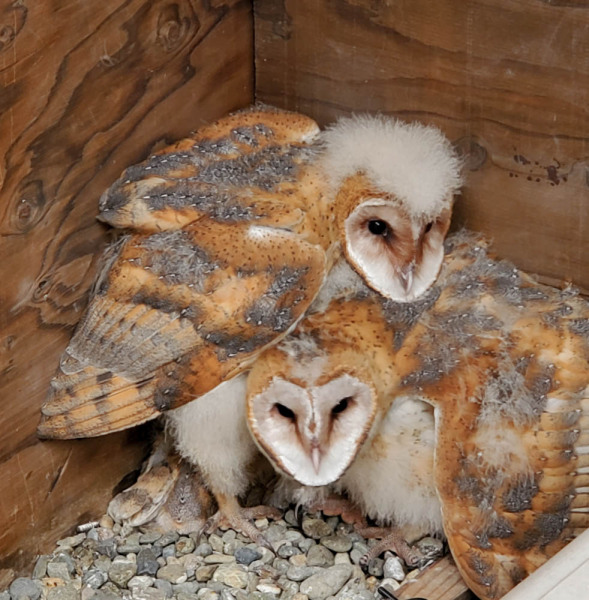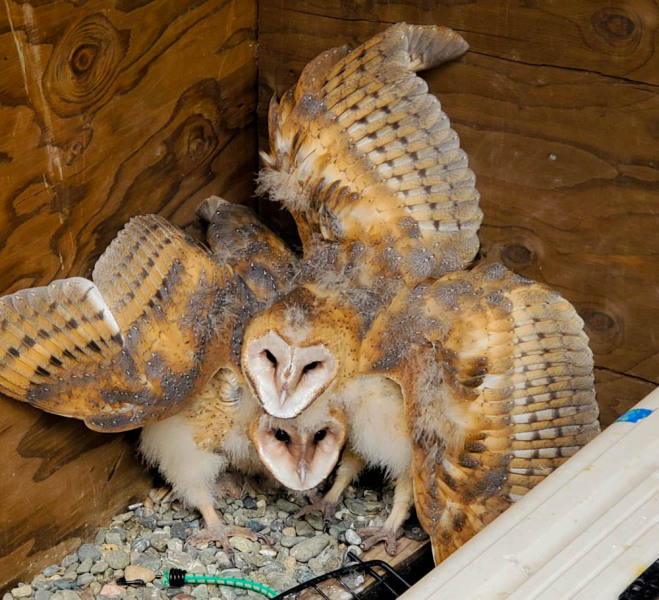On May 25, 2023, NAR received three baby barn owls that had traveled from Colorado to Watsonville hidden in a hay truck. They were about four weeks old. The next day, another baby barn owl of about the same age was brought to NAR from a construction site in Aromas. Because the four barn owls were close in age, they were put together and cared for in an animal crate that measured 14″ wide x 20″ deep x 16″ high.
On June 1, NAR volunteer Brandee Tolleson picked up the barn owls from NAR and drove them to the NAR Raptor Complex located on her property in a quiet, secluded, wooded valley. This is where they would spend the next three months until old enough to survive in the wild.
This is Brandee’s story of her experience and the profound effect it had on her.
June 1
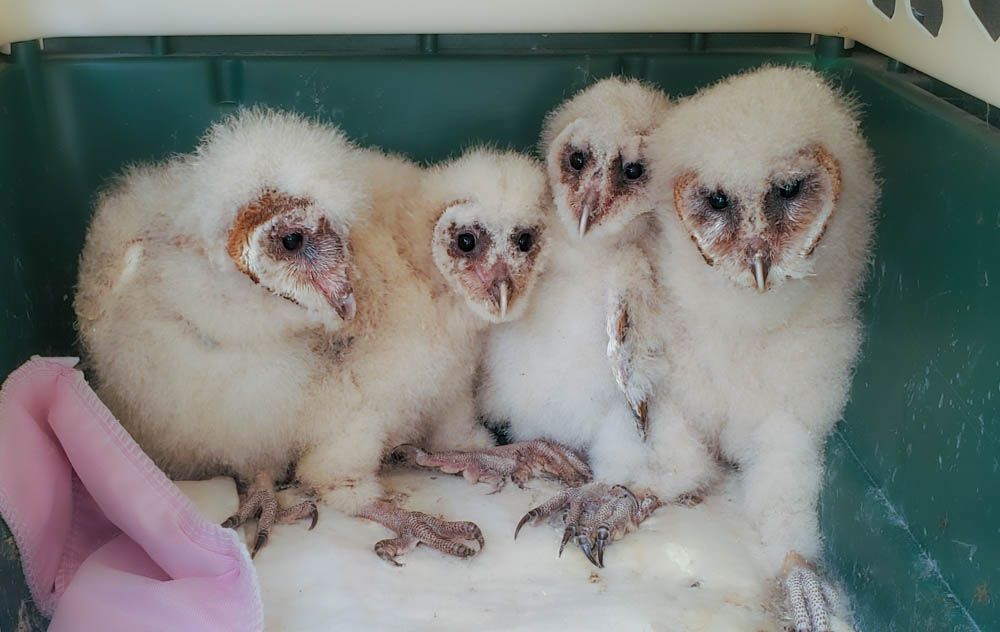 When I arrived home, we placed the animal crate within a large outdoor enclosure. The babies voluntarily remained in the crate for several weeks until they were brave enough to venture out into large enclosure. I named them Snowflake, Quartz, Ghost and Avalanche. In order to minimize the risk of imprinting, I fed the young owlets chopped up rats at night by long forceps so they wouldn’t see me.
When I arrived home, we placed the animal crate within a large outdoor enclosure. The babies voluntarily remained in the crate for several weeks until they were brave enough to venture out into large enclosure. I named them Snowflake, Quartz, Ghost and Avalanche. In order to minimize the risk of imprinting, I fed the young owlets chopped up rats at night by long forceps so they wouldn’t see me.
It was interesting to watch them grow up and how the three siblings would often be near each other while the single ‘outsider’ would be standing alone. Other times all four would be nestled up together like puppies.
They eventually made their way out of the crate and began toddling clumsily on the ground in the enclosure.
June 8
In a little over two weeks, they began to look less like babies and more like barn owls.
June 24
It wasn’t long before they gained enough strength, feathers, and skill to fly up to the perches in the flight cage where they have plenty of room in every direction to practice flying.
July 24
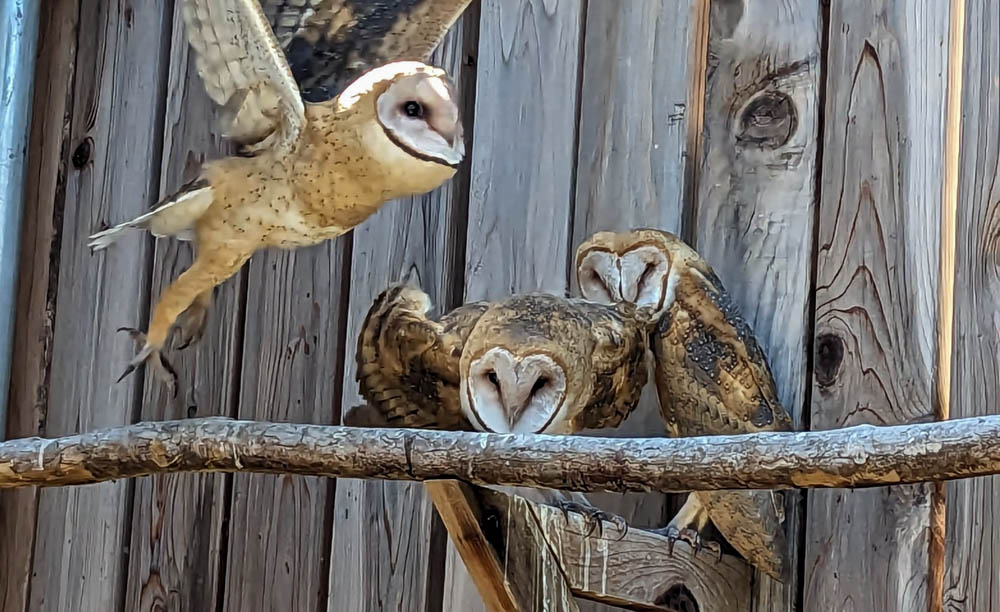
I mostly do soft releases with the raptors. When we think they’re ready to leave our aviary, we open the door to the outside and allow them to leave on their own. I don’t like to force them since it causes stress…unless I know they’re ready and won’t leave. That mostly happens with red shouldered hawks.
After three months, I knew these four owls were finally ready to be released. I took my last picture of this handsome crew a few days before we soft released them.
August 20
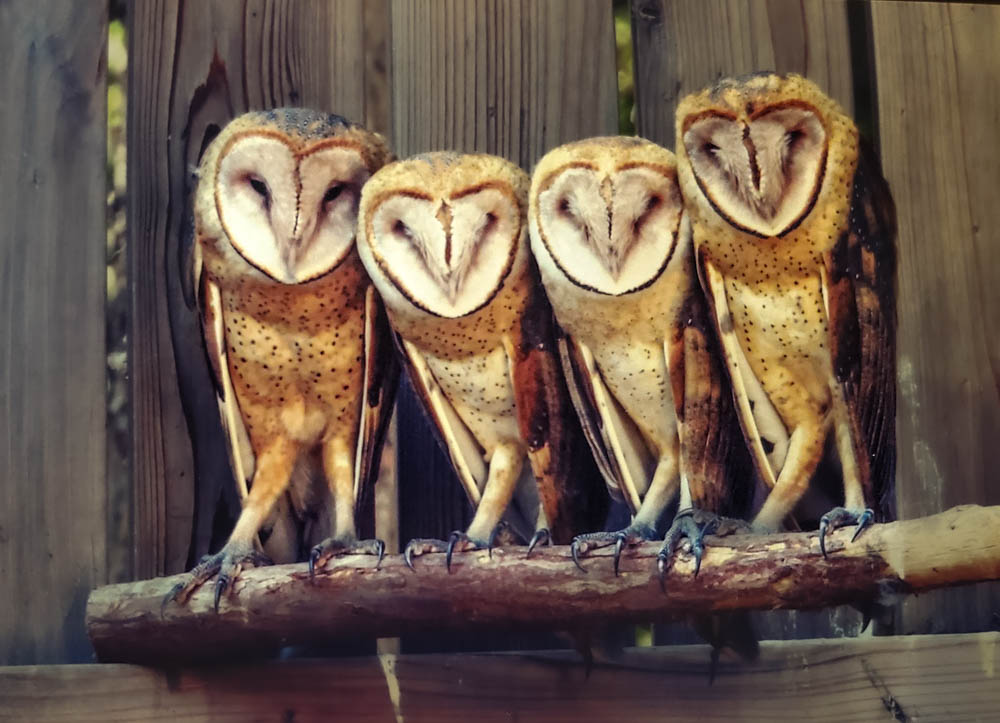
One evening, I opened the door on a calm, clear, still night. I sat quietly in front of the flight cage, out of their view and waited. After less than 10 minutes, the first one flew out silently and circled around the property landing in a nearby tree. I could see its outline because of the white feathers. The remaining three came out one-by-one a few minutes apart. Each one took a few laps around the sky, all picking different spots to land nearby. At one point two of them took turns circling above my head repeatedly, and one came within a few feet of my face as if saying thank you and good bye. I had tears streaming down my face and felt like the luckiest person on the planet. It was heart opening and truly magical! I’m actually tearing up now reliving the experience.
The End
Without Native Animal Rescue, it’s doubtful these four owls would have survived. This is what Native Animal Rescue does every day of the year…Gives wild animals a second chance at life. We believe deeply that, in addition to saving animals, NAR gives humans a boost in their understanding of and sensitivity to the wild animals living among us now and who were here before us.




